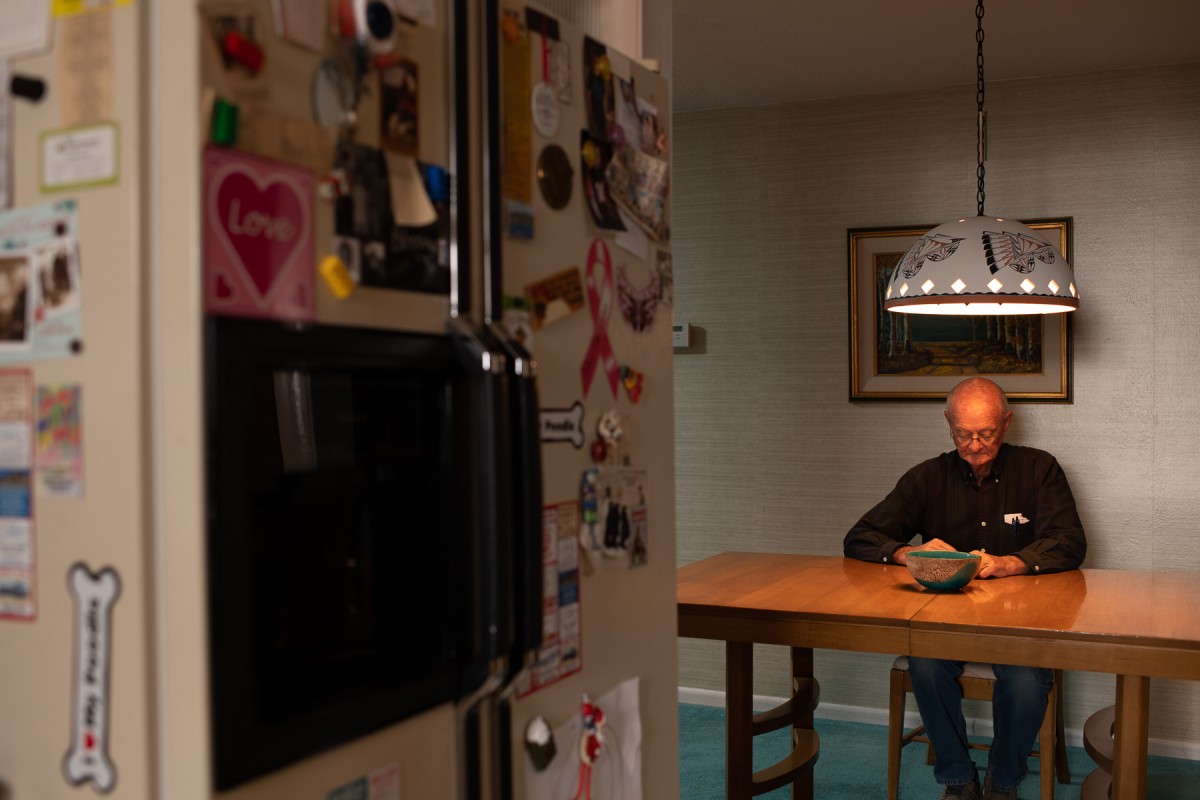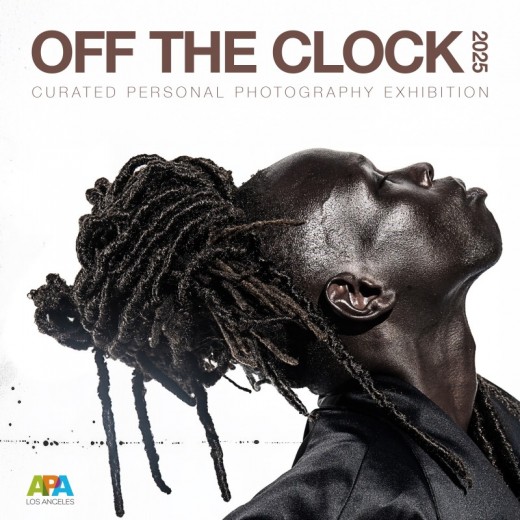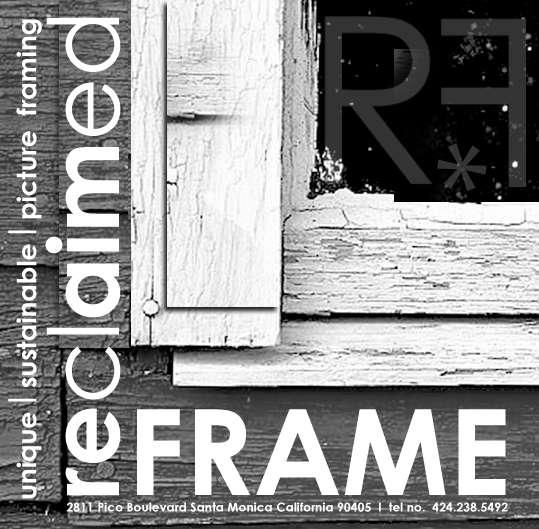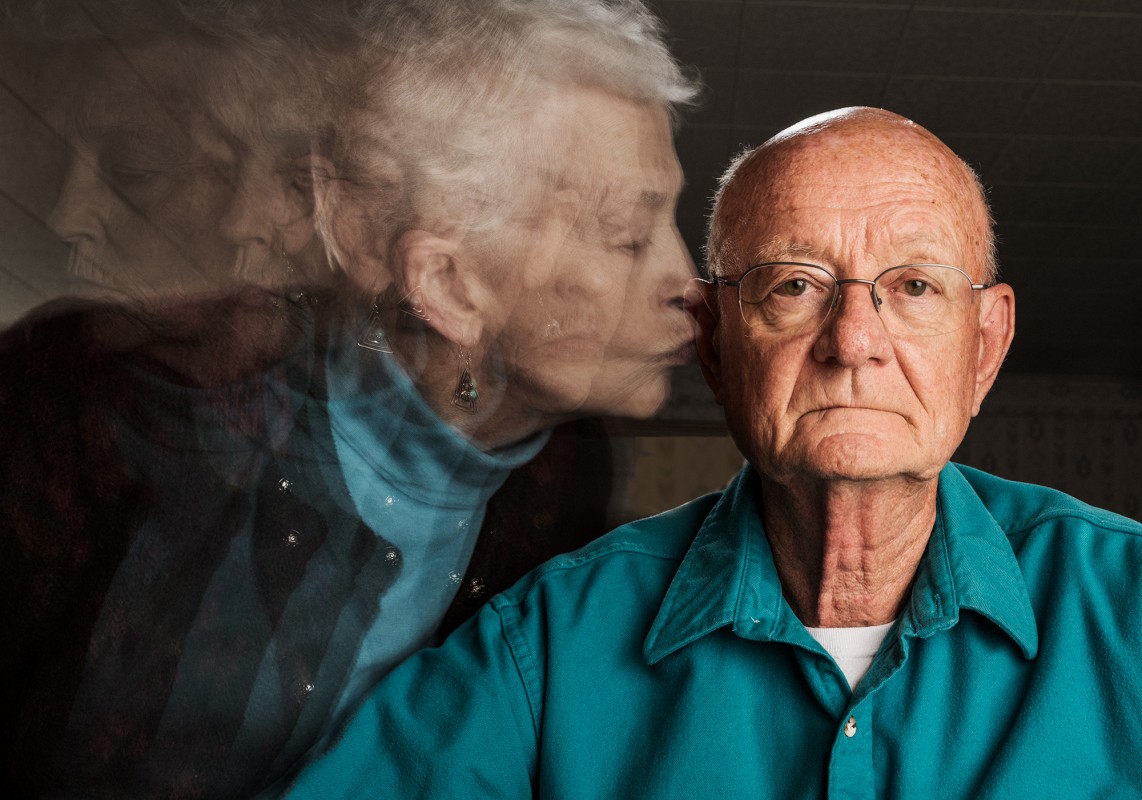
©Eric O'Connell
Congratulations to Eric O'Connell, one of three Best in Show winners of APA LA's Off the Clock 2021, juried by Rebecca Morse. Based in Flagstaff, AZ, and Hamburg, Germany, O'Connell is an award-winning photographer, visual anthropologist, and Associate Professor of Practice (Photography) at Northern Arizona University. His portfolio of work includes clients such as Cadillac, Ritz-Carlton, IBM, Quicken, The New York Times, Wired, and People Magazine. "I use photography to examine the socio-cultural landscape with a focus of shooting people in locations, as a trained visual anthropologist." His series Isolation is a collaboration between himself and his parents. He explains, "The COVID pandemic coalesced a history of photographing them with an urgency to make a larger comment on aging, loneliness, memory, loss, paranoia, and other cultural phenomena that the pandemic highlighted."
How was photographing your parents in the series Isolation different than your commercial work of photographing people on location?
Other than being very personal, and with no crew around, it wasn’t much different. I usually work methodically and calmly, and this was no different. I’m inspired by spaces that people create, and I react to them and am inspired by them. On commercial shoots, the parameters are smaller, but the process of choosing a space to tell a story is the same. In the case of the “kiss” shot, (Untitled) Pandemic #1, it was a matter of convenience (countertop in a kitchen put everyone at the right height), and the cabinets and tabletop served as scrims for my 5’ Octa box. The backlight was provided by a skylight and a large set of windows and doors behind them.

©Eric O'Connell
In a way, I am reminded of Larry Sultan's Pictures from Home, but the pandemic changes your photographs into something more than memory and nostalgia. They become slices of a precise moment in history. How long did you spend with them, and how did they feel about being included in the project?
I appreciate the reference very much. It’s true, the pandemic did change the way we read these images. I literally spent about a year with them. From the time the pandemic started, mid-March, to about that time a year later, I was semi-living back at my parent’s home. I was mostly concentrating on other projects and on teaching during that time, but I’ve always photographed my parents, so they are used to it. I think they think it’s cute. I am in my head with all this serious stuff, and I think they mostly are just being great parents and helping me out. No different than when I was 16-years-old!
There is a power shift that happens when the child wields the camera's power over his parents. Were the photographs a collaborative effort, or did you art direct the scenes?
Totally collaborative in the sense that they are willing to participate, and trust me. I totally direct the scenes. I may ask my mom, or dad if they have some other shirt, or can wear this gown, or…that sort of thing.
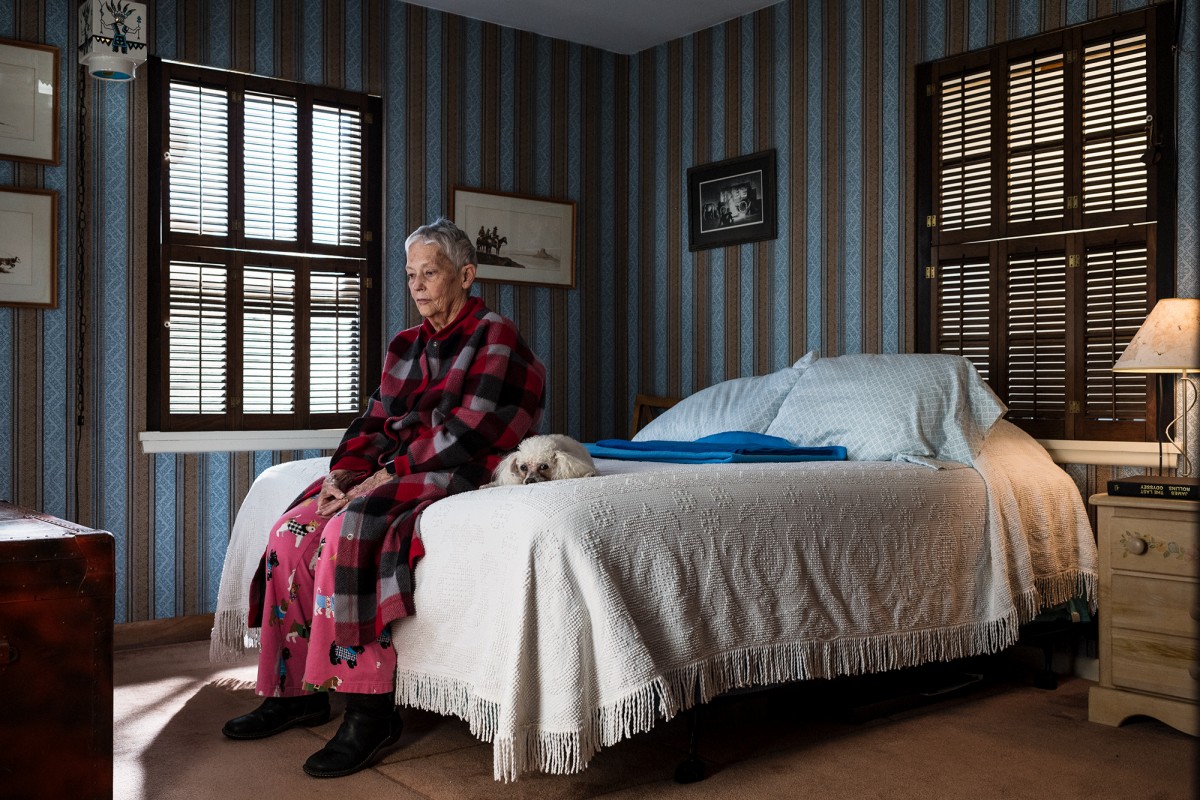
©Eric O'Connell
How did you decide on the particular setting of the images? For example, was there a specific relationship between your mother and/or father to the scene?
Yes. Definitely. I’m inspired by spaces lived in and used. For me, it’s part of the cultural landscape for a location portrait. The room my mom is in, for example, is full of her past. Believe it or not, it’s my childhood room (yes, that wallpaper was cool once! haha), but was the former master bedroom. The corner of the chest she’s blankly staring at is the one her parents packed her stuff in and shipped her off to college with, on a train. She grew up the daughter of homesteaders in the middle of nowhere. That chest represents a lot to her as she has always felt she was a “mistake” as she was much, much younger than her siblings, and felt her parents wanted her to just go away. She had never been hardly off the ranch, much less traveled, and lived in, or been to a big city! The bedspread is from her childhood on the ranch (Encino, NM). The images on the wall are all things she has hung over the years. She fiddles with her wedding ring, and her companion is her beloved dog (who died a month later). The fiddling with the ring and blank stare can be read as many things – is universal, which I like.
Other spaces, like outside by the shed with my dad in the image I refer to as Sysiphus is really a story about him, 100%. The way my mom can stare, fiddle, and have time for nostalgia, my dad has no time for. There is always something to be done. No end. And yet, the old wood and not-so-good-looking stuff on the wall is sometimes the result. They both grew up on farms and ranches, and in that life, nothing –– I mean nothing –– gets thrown away. And, it’s a never-ending loop of winding up the cord and unwinding the cord. The whole “out by the shed” also plays on stereotypical ideas.
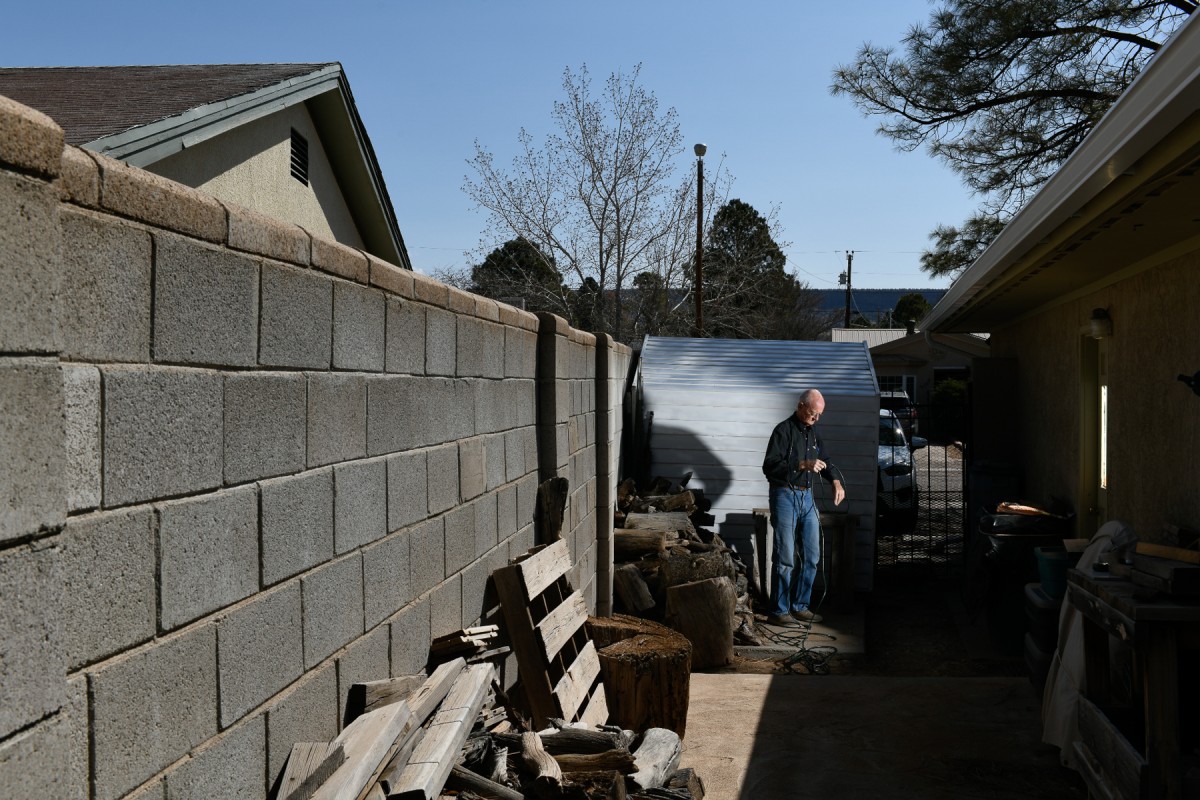
©Eric O'Connell
There is a sense of loneliness to the imagery - even though your parents are still alive and together. Were they having a difficult time during the pandemic? Was it challenging to picture your parents that way?
Definitely! Very challenging for me, and for them. They are getting old, and things are breaking down, and I’m the oldest son and am closest and get to see this, and take care as much as possible. The pandemic was, to some degree, peaceful. But, it also brought into focus their changing needs and situation. It really put a ton of pressure on my dad, who does everything – shopping, cooking (he’s a good cook), cleaning. All of it. My mom, whether it from cancer, accidents, bone fusions, surgeries, etc. is constantly in pain and almost unable to do anything. They both were in the high-risk category for COVID, especially my mom, so my dad was hyper-vigilant about even doing more. I’m glad I could take some of that pressure off of him.
Had you ever thought about including your parents in your work before the pandemic? Will you continue to photograph them now as things return to normal?
Absolutely. I have photographed them for a long time, but never really with a specific topic, or project in mind. This opened my eyes to possibilities. I have a large file of images of them, and some of the images quite good, but finding the connections with them over the years has been hard. Mostly because the style, content is varied, and sometimes the primary motive behind some photos was nothing more than a lighting test. (Oh, I got this new thing! Going to visit. Taking my new toy!) I do feel a sense of urgency to shoot them more. This set of images, Isolation, is the first time I did a conceptual series. It’s my favorite way to work, and I look forward to more.
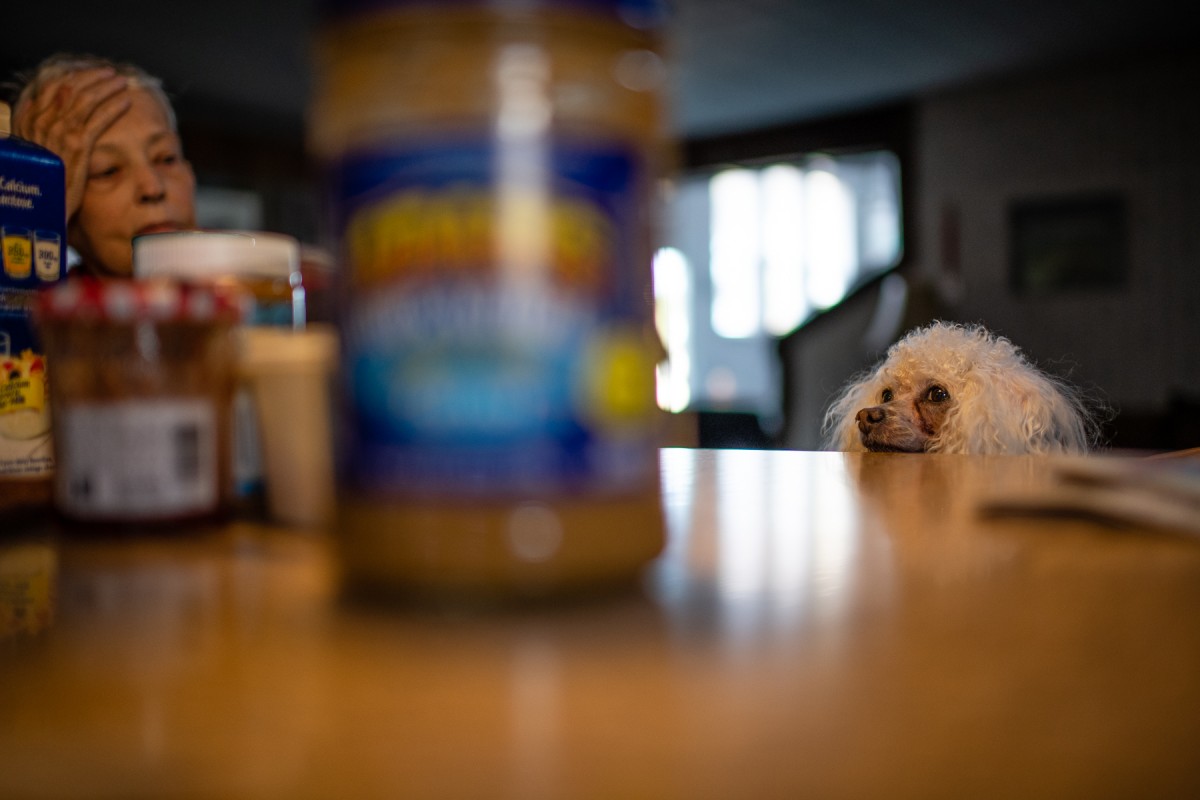
©Eric O'Connell
What did you learn about your parents through this project? What did you learn about yourself?
I learned that we are all very vulnerable. They, for obvious reasons, more so than me. But, sometimes, like when I’m racing down a double black diamond mountain bike trail – maybe not. Either way, there is a preciousness.
I think they are very proud of the images and that they have gotten some attention, and that makes me feel good. They feel relevant, even in a field that is not theirs. I think that is the hardest and biggest lesson, is that the elderly feel irrelevant.
Professionally and artistically, it was nice for me, the act of rediscovering what motivated me into photography in the first place – ideas and seeing them in a frame. A photo. The observation and process of developing an idea. There was not much we could do, but be with each other and I utilized that time with deliberation and thought to do what I love, and in the process gave them something as well.
